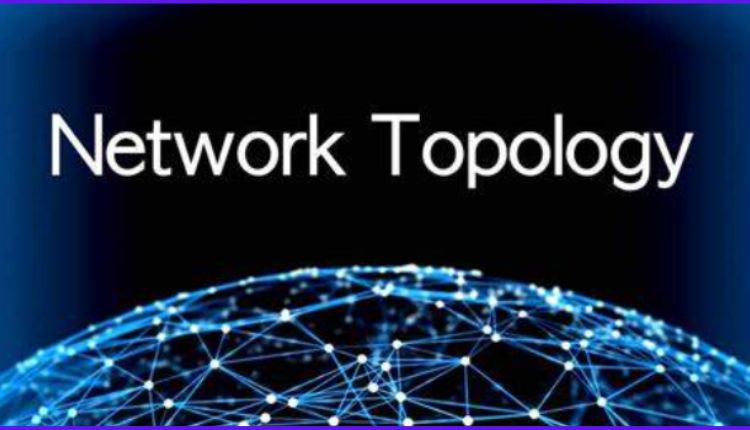One such emerging innovation is BCAN, short for Blockchain Content Addressing Network. BCN represents a modern technique to statistics storage, content validation, and decentralised access. With a developing interest in decentralised technology, BCN has speedily caught the attention of builders, technologists, and investors alike.
BCN is not merely a buzzword; it symbolises a conceptual shift from traditional data systems to blockchain-powered content material identity and verification. As we delve deeper into the core additives of BCN, its mechanisms, and capability applications, it becomes clear that this generation may want to redefine the way content is stored and retrieved within the digital global.
- Understanding the Concept of Content Addressing
- The Structure and Architecture of BCAN
- Benefits of Using BCAN for Data Management
- Real-World Applications of BCAN
- BCAN within the Context of Web3
- Challenges and Limitations of BCAN
- Future Prospects and Innovations in BCAN
- The Role of Community in BCAN Development
- Conclusion
Understanding the Concept of Content Addressing
To absolutely grasp what BCAN gives, it’s important to apprehend the foundational idea of content addressing. Unlike traditional URL-based information retrieval structures, in which statistics is positioned based on where it is saved, content addressing retrieves data primarily based on what it is. This is achieved through the usage of cryptographic hashes that uniquely become aware of a piece of content.
Content addressing allows for immutability, transparency, and efficient content distribution. BCN leverages this precept to ensure that the content material cannot be tampered with or altered without detection. This centre idea turns into even more power when blended with blockchain, developing a decentralised system that verifies content integrity through consensus mechanisms and immutable ledgers.
The Structure and Architecture of BCAN
BCAN is designed with a modular structure to maximise scalability, reliability, and flexibility. At the heart of BCN lies an allotted community of nodes, each answerable for storing, verifying, and sharing content through the usage of cryptographic hashes. These nodes engage through blockchain-based protocols that ensure consensus, redundancy, and fault tolerance.
The architecture is split into numerous layers, along with the records layer, blockchain layer, entry layer, and verification layer. Each layer performs an essential function in permitting seamless interaction between users and the community. The blockchain layer is in particular good-sized, as it guarantees that every transaction or change to content is recorded immutably, permitting a robust system for content monitoring and accountability.
Benefits of Using BCAN for Data Management
One of the most compelling aspects of BCN is its array of benefits in handling and dispensing statistics. BCAN gives an excessive degree of statistical integrity, as content is verifiable through a cryptographic means. Any unauthorised attempt to alter the content material is currently detectable, making sure to accept it as true across the machine.
Furthermore, BCN helps decentralisation, disposing of the need for centralised servers, which can be frequently susceptible to attacks or censorship. This makes BCN an ideal choice for applications requiring censorship resistance, consisting as digital journalism, archiving, and whistleblower structures. In addition, the network’s scalability allows for green content material delivery, even in allotted environments.
BCN additionally gives cost efficiency by means of lowering dependency on principal cloud vendors and enhancing data redundancy. Data saved in the community is routinely replicated throughout a couple of nodes, ensuring availability and reliability, even though some nodes go offline.
Real-World Applications of BCAN
BCAN’s versatility extends to an extensive range of use instances throughout extraordinary industries. In the media and publishing sector, BCN can ensure content material authenticity and traceability. Journalists and content creators can timestamp their paintings on the blockchain, proving authorship and resisting tampering.
In the healthcare enterprise, BCN allows steady sharing of clinical facts among stakeholders without compromising the affected person’s privacy. By storing content hashes on a blockchain and encrypting touchy records, healthcare carriers can ensure transparency and confidentiality.
Supply chain control is any other domain that benefits substantially from BCN.
In the field of academia and research, BCN gives a mechanism to shop and verify scientific facts and courses, promoting openness and reproducibility of research findings.
BCAN within the Context of Web3
As the net actions toward the decentralised and person-centric paradigm called Web3, BCAN emerges as a vital infrastructure issue. Web3 emphasises information ownership, transparency, and decentralisation, all of which align carefully with BCN’s core standards.
BCN acts as the backbone for decentralised programs (dApps) that require tamper-proof fact storage and verification.
Challenges and Limitations of BCAN
Despite its numerous advantages, BCAN isn’t without challenges. One of the number one problems is scalability. As the community grows, the quantity of content and the number of verification requests grow exponentially. Efficiently dealing with this load while maintaining performance is a full-scale technical hurdle.
Another challenge lies in information privacy. While content material hashes ensure verification, the original content might also still live on decentralised storage systems. Ensuring that sensitive facts stay steady while nonetheless taking advantage of the transparency of blockchain requires state-of-the-art encryption and get right of entry to control mechanisms.
Furthermore, the adoption of BCN requires a mastery curve for developers and companies unfamiliar with blockchain and content addressing. Widespread adoption will rely on the improvement of consumer-friendly interfaces, toolkits, and educational sources.
Regulatory uncertainty additionally poses a risk to BCN’s growth, in particular in jurisdictions with strict data governance laws. Striking a balance between innovation and compliance can be important for the generation’s success.
Future Prospects and Innovations in BCAN
The destiny of BCAN seems promising, with ongoing studies and development geared toward improving its capabilities. Innovations, including zero-information proofs, layer-2 scaling solutions, and AI-driven content verification, are being explored to enhance safety, scalability, and efficiency.
Collaborations among blockchain projects and academia are fostering new theoretical frameworks for disbursed content addressing. These efforts are anticipated to yield realistic answers that improve the usability and accessibility of BCN.
Interoperability is likewise a key area of attention. For BCN to obtain full-scale adoption, it must seamlessly integrate with other blockchain ecosystems, databases, and content platforms. Projects operating on cross-chain conversation and unified facts requirements are helping to pave the way for an extra-interconnected BCN community.
The Role of Community in BCAN Development
A strong and engaged network is crucial to the success of any decentralised technology, and BCAN is no exception. Developers, researchers, content creators, and users all make contributions to the non-stop development of the BCN environment.
Hackathons, developer offers, and academic campaigns are essential gear for fostering community growth and inspiring collaboration.
By constructing an inclusive environment that welcomes contributions from numerous stakeholders, BCN can remain agile and resilient in the face of changing technological and regulatory landscapes.
Conclusion
BCAN, or Blockchain Content Addressing Network, represents a powerful fusion of content material addressing and blockchain ideas.
As industries continue to seek secure, transparent, and efficient approaches to manipulating statistics, BCN presents a compelling answer that aligns with the middle beliefs of decentralisation and user empowerment.
In a world increasingly shaped by means of data, BCN stands as a beacon of consideration, safety, and innovation, guiding us towards a more open and decentralised virtual future.





